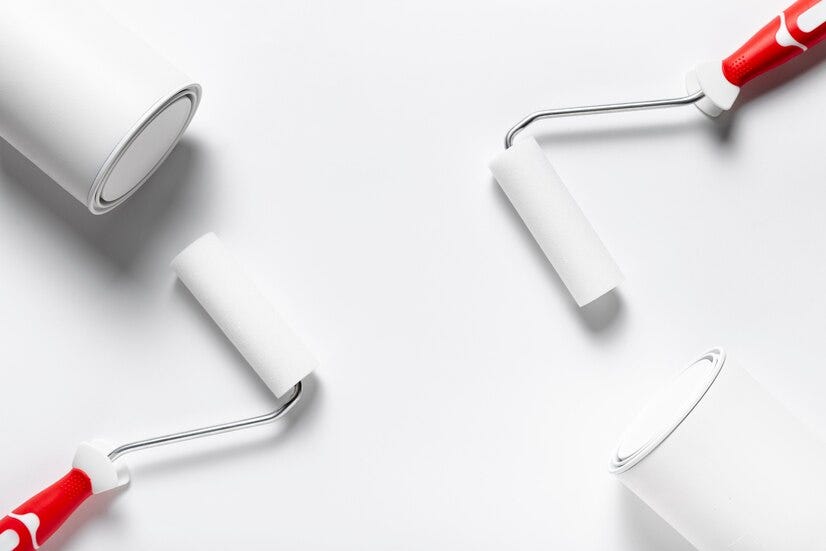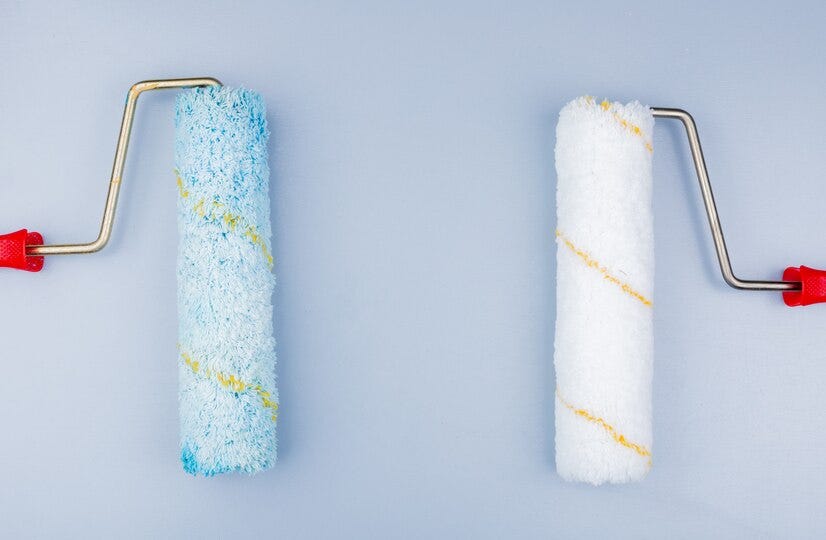Choosing the Perfect Paint Roller Cover: How to Find the Ideal Sizes and Type for Your Project
 Whether a painting is a professional work or a do-it-yourself home improvement project, it is an art. Choosing the correct instruments makes all the difference, and among them, the paint roller cover is absolutely important. One size does not fit all therefore, selecting the correct roller cover for your requirements guarantees a consistent, even finish. Knowing the several kinds — from basic sizes to specialist covers like the 18 inch paint roller helps you get the greatest outcomes. Choosing the correct roller cover calls for an understanding of materials, nap length, and surface roughness whether you are using latex paint or looking for the ideal roller for epoxy applications.
Whether a painting is a professional work or a do-it-yourself home improvement project, it is an art. Choosing the correct instruments makes all the difference, and among them, the paint roller cover is absolutely important. One size does not fit all therefore, selecting the correct roller cover for your requirements guarantees a consistent, even finish. Knowing the several kinds — from basic sizes to specialist covers like the 18 inch paint roller helps you get the greatest outcomes. Choosing the correct roller cover calls for an understanding of materials, nap length, and surface roughness whether you are using latex paint or looking for the ideal roller for epoxy applications.
Understanding Paint Roller Cover Sizes
Small four-inch tiny rollers to big 18-inch paint rollers meant for great surface coverage are among the several sizes of paint roller covers. While normal wall painting uses the conventional nine-inch roller, using a larger size is more effective when working on bigger areas including ceilings or industrial buildings. Reducing painting time on large surfaces while preserving consistent finish calls, especially for an 18-inch paint roller. To guarantee optimal productivity and minimum tiredness, the roller you choose should be of size appropriate for your project.
Choosing the Right Nap Length for Your Surface
Different lengths are appropriate for different surfaces; nap length is the fabric thickness of the roller cover. The shorter nap of 1/4 inch to 3/8 inch works well for flat surfaces like drywall or metal to give a slick, even layer of paint. A 1/2-inch nap keeps a smooth finish while reaching cracks on semi-rough surfaces like wood panelling or textured walls. On hard surfaces like stucco or brick, appropriate coverage depends on a longer nap ranging from 3/4 inch to 1 1/4 inch. Choosing the right nap length will help you avoid streaks and guarantee consistent application if you are using an 18-inch paint roller.
Materials Matter: Synthetic vs. Natural Fibers
Roller cover material affects paint absorption and application. Made of polyester or nylon, synthetic coverings fit nicely on many surfaces and are perfect for latex-based paints. They provide great coverage and fight matting. < For oil-based paints, stains, and varnishes, natural fibre covers — such as those derived from lambswool or mohair — are most appropriate. These materials give a smooth, equal coat and hold more paint. For epoxy applications, a high-density foam or microfiber roller is advised as these materials guarantee a perfect, bubble-free finish. Choosing the correct material for your roller cover helps to avoid drips and flaws, so producing professional-grade output.
When to Use an 18 Inch Paint Roller
Projects involving large-scale painting gain much from an 18-inch paint roller. Perfect for painting commercial buildings, warehouses, and outside walls, these large rollers cover more space in less time. Their efficiency exceeds the requirement for extra handling even if they need a specific roller frame and an extension pole for improved control. Because it keeps consistency and speeds up the work without sacrificing quality, professionals choose an 18-inch paint roller. Selecting a larger roller guarantees a uniform distribution of paint and reduces apparent roller marks when painting big, continuous surfaces.

The Best Roller for Epoxy and Specialty Paints
Epoxy paints need a roller that reduces air bubbles and produces a glass-like gloss. Often leaving lint or air pockets, standard rollers can harm the final coat. Usually, a high-density foam or microfiber roller is the best roller for epoxy applications since these materials let the paint spread uniformly without flaws. Furthermore, it is rather important to make sure the roller cover of an 18-inch paint roller used for epoxy coatings is made for flawless application. Especially on floor, countertop, or garage surfaces, using the correct roller cover for epoxy guarantees a professional-grade result and helps to prevent uneven textures.
Cleaning and Maintaining Your Paint Roller Covers
Roller cover lifetime is extended and high-quality outcomes for next projects are guaranteed by proper maintenance. Roll extra paint off a scrap piece of cardboard or newspaper after every usage. Rinsing the roller with warm, soapy water until the water runs clear helps water-based paints avoid build-up of paint. For oil-based paints, complete cleaning calls for employing a compatible solvent like mineral spirits. Roller coverings remain in good shape for next usage by being correctly stored — hanging them or packing them in sealed containers. Frequent cleaning and maintenance of your 18-inch paint roller guarantees that it stays in perfect operating condition, therefore lowering the demand for replacements.

Conclusion
The greatest results from any painting project depend on choosing the correct paint roller cover. Knowing the various sizes, nap lengths, and materials will help you decide whether you need a normal roller or an 18-inch paint roller for huge surfaces. Selecting the right roller for epoxy guarantees a professional finish free of faults if you are using specialist coatings. Spending time choosing the best roller for epoxy reduces work and improves the general calibre of your painting endeavour. These rules will help you to guarantee a flawless, quick, and excellent painting experience.
FAQs
1. What is the advantage of using an 18 inch paint roller?
For painting large surfaces including walls, ceilings, and industrial areas, an 18-inch paint roller is perfect since it covers a larger area in less time. It guarantees an even coat and lowers apparent roller marks, therefore increasing the efficiency for major tasks.
2. What type of roller cover should I use for epoxy paint?
Because they smooth, glass-like finish and prevent air bubbles, high-density foam or microfiber rollers are the ideal roller for epoxy applications. Selecting the correct roller guarantees an even coat free of flaws.
3. Can I use an 18 inch paint roller on textured surfaces?
On textured surfaces, yes an 18-inch paint roller can be used; but, selecting the right nap length is absolutely vital. A longer nap — 3/4 inch to 1 1/4 inch — allows better coverage and facilitates paint reaching into cracks on difficult surfaces.
4. How do I clean and store my paint roller cover?
For water-based paints or mineral spirits for oil-based paints, after usage remove extra paint and wash the roller with warm, soapy water. To preserve the roller’s quality and lifetime, hang it to dry or pack it in an airtight bag.
5. When should I replace my paint roller cover?
When a paint roller cover starts to lose its shape, shed fibres, or offer no smooth finish, it should be replaced. Regular cleaning and good storage help to extend its lifetime; nonetheless, it’s time for a new one if it begins to compromise the paint job.



Comments
Post a Comment